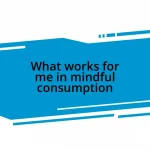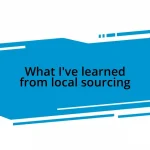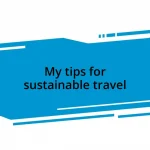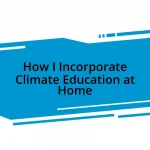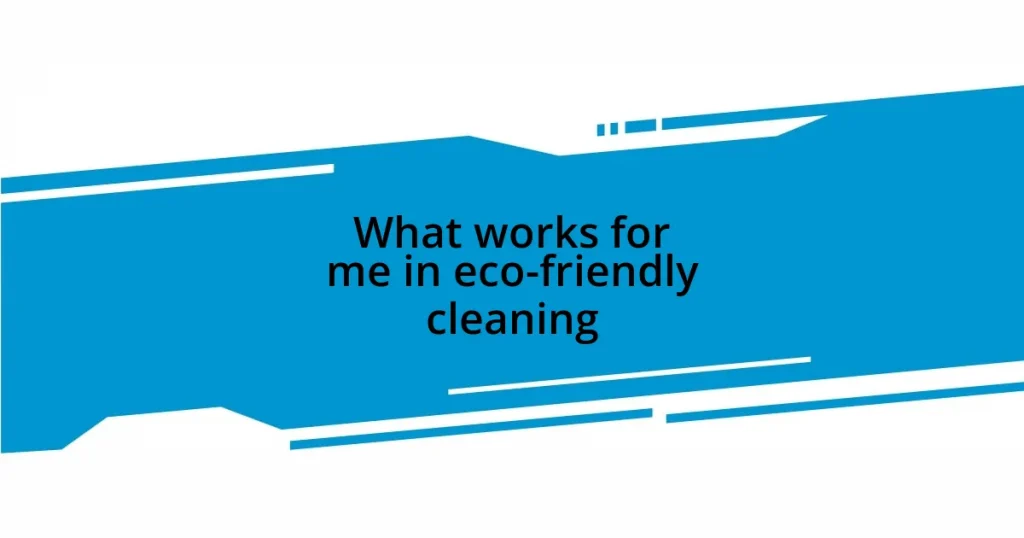Key takeaways:
- Climate education fosters emotional connections and critical thinking, enhancing student engagement with issues like renewable energy.
- Hands-on projects, such as community gardens and climate negotiation simulations, encourage active learning and real-world relevance.
- Community involvement, including creek clean-ups and workshops, empowers students to impact their local environment and advocate for change.
- Diverse assessment techniques, such as reflective journals and digital portfolios, help gauge student understanding and commitment to climate issues.

Introduction to Climate Education
Climate education is not just a subject; it’s a vital component of preparing our students for the world they will inherit. I still remember the first time I saw my students connect the dots between their everyday lives and global climate issues. It was a powerful moment; you could see their curiosity ignite.
In my experience, integrating climate education means more than just hitting the textbooks. It’s about creating opportunities for passionate discussions that allow students to express their feelings and concerns. Have you ever noticed how engaged students become when they talk about something they genuinely care about?
As I embarked on this journey, I realized that climate education opens the door to critical thinking and problem-solving. One day, while discussing renewable energy sources, a student shared a family tradition of using solar panels. That anecdote not only showcased their understanding but also brought the lesson to life in a deeply personal way. It’s those moments of connection that reveal how important climate education truly is for shaping informed, proactive individuals.
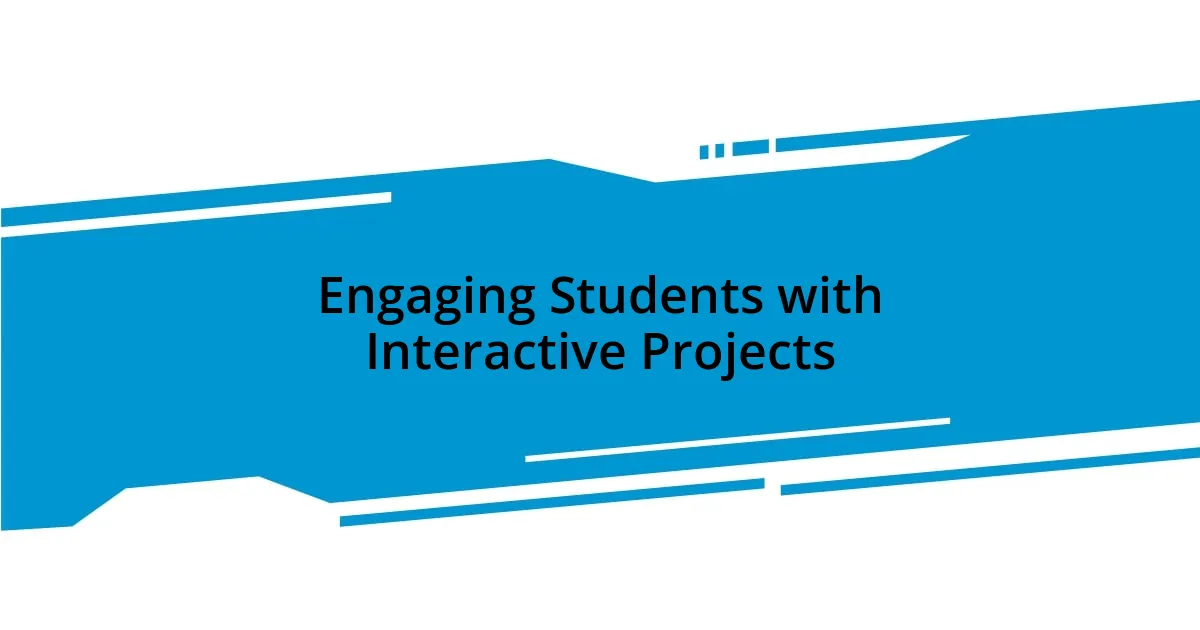
Engaging Students with Interactive Projects
Engaging students with interactive projects has been one of the most effective methods in my curriculum. I remember a particularly enlightening moment when my class created a community garden. Working together, they learned not just about climate science but also the importance of sustainability and local ecosystems. Watching them nurture the plants and then harvest vegetables made the concepts click; it felt like the seeds of knowledge were sprouting along with the carrots!
Another successful project was a simulation of climate negotiation talks. Each student took on the role of a different country, discussing their energy needs and environmental impacts. Their enthusiasm was infectious! They debated passionately over resource allocation and carbon emissions, which turned a theoretical lesson into a gripping real-world experience. I often think back to those debates, where students who started as quiet observers transformed into articulate advocates for change.
Ultimately, hands-on projects don’t just teach students about climate; they connect them emotionally to the material. When my students staged a recycling campaign at school, they didn’t just learn about waste management; they sparked a genuine enthusiasm for change among their peers. It was incredible to see them take pride in their impact, realizing that their efforts could lead to tangible benefits for their community. These interactions are what really bring climate education to life.
| Project Type | Student Engagement |
|---|---|
| Community Garden | Hands-on experiences helped students understand sustainability. |
| Climate Negotiation Simulation | Active debates fostered a deeper connection to global issues. |
| Recycling Campaign | Empowered students to promote real change in their community. |

Assessment Techniques for Climate Learning
When assessing climate learning, I’ve found that a mix of traditional and innovative techniques yields the best results. I like to use reflective journals where students document their thoughts and feelings about climate-related lessons. This allows me to see their emotional connections to the material. One time, a student wrote passionately about their concern for endangered species affected by climate change. It was a reminder of how deeply these topics resonate with them.
I also incorporate peer assessments, where students evaluate each other’s projects, fostering a collaborative learning environment. Here are a few techniques that I frequently employ:
- Reflective Journals: Students regularly express personal reflections, providing insight into their emotional connection with the material.
- Peer Assessments: Students review one another’s work, promoting constructive feedback and collaborative learning.
- Project-Based Assessments: Rather than tests, I assess through projects that allow students to explore climate issues creatively and practically.
- Digital Portfolios: Students curate their work, which helps them showcase their learning journey and engage with the content over time.
By using these varied assessment techniques, I can better gauge how my students relate to climate issues, ultimately reinforcing their commitment to understanding and addressing these urgent challenges.

Community Involvement in Climate Initiatives
One of the most rewarding aspects of integrating climate education has been witnessing the power of community involvement. I recall a day when our class participated in a local creek clean-up organized by a nearby environmental group. The joy on the students’ faces as they pulled trash from the water and discovered wildlife was unforgettable. It’s not just about cleaning up; it’s about creating a bond with our surroundings and recognizing that we have the power to impact our local ecosystem positively.
Equally impactful was our collaboration with a local university’s sustainability program. We hosted workshops where students learned from experts in environmental science. The shared enthusiasm for climate action during these workshops ignited a spark in my students. They often asked questions that stemmed from personal experiences, like how deforestation affected their favorite parks. This interaction made the climate crisis feel more tangible and reminded everyone that we are all part of the solution, no matter our age.
I’ve also encouraged my students to engage with local policy by attending town hall meetings and speaking up about climate initiatives. One student, inspired by our discussions, bravely voiced her perspective during a session about renewable energy proposals. When I saw her confidence grow and her commitment to advocacy flourish, I realized that community involvement isn’t just an educational tool; it’s a pathway for young voices to contribute to real-world change. Isn’t it incredible to think how much impact we can make together?

Resources for Climate Education Implementation
One invaluable resource for integrating climate education is the wealth of online platforms dedicated to environmental learning. Websites like National Geographic Education and the Environmental Protection Agency provide lesson plans, interactive activities, and up-to-date research that can be adapted to any curriculum. I love how these resources inspire creativity; once, after showing students a virtual tour of an endangered ecosystem, they brainstormed ways to protect it, leading to a passionate class debate. Have you ever seen students light up when they discover new knowledge? It’s simply magical.
In addition to online resources, I also found success in utilizing local community gardens as hands-on learning environments. This approach not only teaches students about biodiversity and sustainable practices but also immerses them in the environmental changes occurring around them. I vividly remember a student expressing awe when they saw a butterfly emerge from a chrysalis right before their eyes. That moment encapsulated the connection between nature and education; it’s a reminder of how powerful and serene learning can be when it happens outside of the traditional classroom setting.
Furthermore, leveraging social media and educational apps can elevate climate conversations. For instance, I introduced my students to a citizen science app that allowed them to report local wildlife sightings, connecting them to real-time data collection. The excitement was palpable, especially when a couple of students discovered a rare bird species in our neighborhood! This experience not only reinforced their knowledge but also made them feel like active participants in global climate efforts. Isn’t it fascinating how technology can bridge the gap between learning and real-world action?




